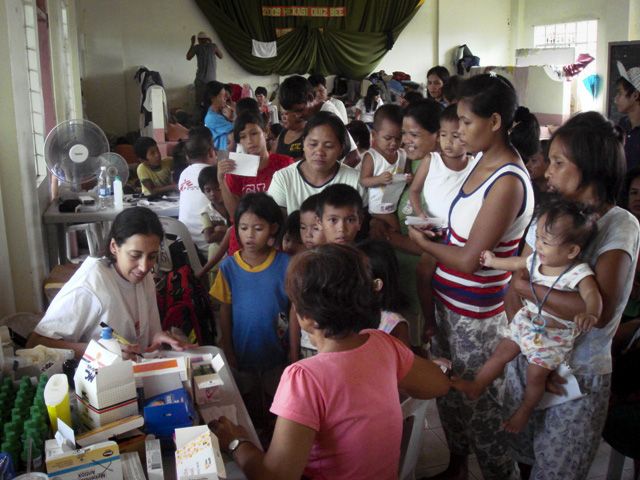The Philippines hit by third typhoon in a month

Late at night on Friday 30 October, typhoon Mirinae made landfall on the eastern coast of Quezon province. Packing winds of 150 km/h with gusts of up to 186 km/h, Mirinae, also called Santi, brought heavy rain and floods to the area before weakening into a tropical storm and veering towards Vietnam.
The typhoon has affected Manila mostly around Tay Tay barangay and Laguna Bay.
At least 19 people have been killed and several others are missing. More than 15,000 people have been relocated to various evacuation centres and around 300,000 people have been affected in 14 provinces.
Mirinae wreaked havoc in an area still reeling from severe floods triggered by tropical storm Ketsana, in late September 2009.
"In some areas, the water has come up to waist height. People were still trying to cope with the aftermath of typhoon Ketsana and have already spent weeks in stagnant water," says Médecins Sans Frontières (MSF) emergency coordinator Pierre Luigi TESTA, "This new ordeal will no doubt make them more vulnerable to waterborne diseases."
MSF, which has been providing assistance to victims in all affected areas of Laguna Bay and in the east of Manila since last month, has been assessing the newly flooded areas especially in the coastal and southern areas of Laguna and in Santa Cruz, where 80% of the town has been submerged.
In Tarlac barangay, Los Banos, Cabuyao, Santa Cruz and Calamba, MSF has identified the need for an additional distribution of hygiene kits, plastic sheeting and water and sanitation activities including construction of latrines and possible provision of clean water. Five primary health posts have been inundated after the typhoon and MSF will launch new mobile clinics in the area.
MSF runs regular mobile clinics in the Laguna region, both in the evacuation centres and in the flooded communities and continues to monitor the health situation. More than 1,500 consultations have been conducted since the beginning of the intervention.
In collaboration with the Ministry of Health, MSF also works on the control and surveillance of cases of diarrhoea and leptospirosis, a bacterial infection caused by exposure to water contaminated by animal waste.
MSF has been distributing relief kits with jerry cans, cooking utensils, blankets, soap and material to built shelters for an estimated 18,000 families in the affected areas. Water and sanitation activities are also underway with the construction of latrines and distribution of sanitation kits with chlorine and brushes in several evacuation centres.
After an initial intervention in the northern island of Luzon, in Cagayan and Ilocos Norte provinces, MSF has been providing assistance to flood victims in Pangasinan, Tarlac and Benguet where 12,000 hygiene and constructions kits have been distributed. In these areas MSF has conducted over 2,500 consultations and continues to monitor the health situation and cases of diarrhoea and leptospirosis in order to control and prevent possible disease outbreaks. MSF has also built temporary latrines in Rosales, Pangasinan and has distributed water purification tablets to over 9000 households.





Leave a Comment